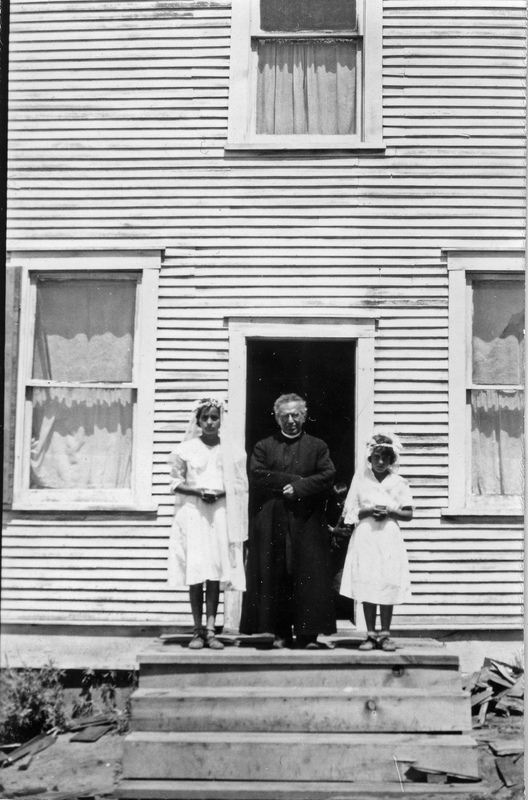Early Religious Interactions Between Plateau Peoples and Jesuits at Nespelem

Jesuit priests and a group of native children outside the Sacred Heart Mission in Nespelem.

A Catholic bishop and girls stand out front of the Sacred Heart Mission in Nespelem.
When Fr. Edward Griva first arrived Nespelem, he learned very quickly about the people who lived in Nespelem, located on the Colville Indian Reservation. In Nespelem, four tribes coexisted and they were the Neiligsin, the 'Nkamugzin, the Nayakuzin and the Numipu tribes. These four tribes make up roughly about 500 people and almost all of them had been baptized.
After interacting more with the people, Fr. Griva realized that each tribe had their own particular dialect, and it was not easy to learn by any standard. Some native people had divulged that a missionary had visited them in the past but only once in every two or three years, and then only remaining with the tribes a short period of time, a few days at most. Due to the sporadic visits of the missionary, the people were very poorly instructed in the Catholic doctrine, and thus had become quite indifferent to the religion as a whole. Another major issue that had arisen was that since none of the prayers had been written in their native dialects, they had no way to practice their prayers or the religion.
After Fr. Griva arrived, 119 native people had been baptized, and that number would only continue to grow. Fr. Griva wanted to make prayers accesbible to all people in the tribes, so one of his main goals was transcribing the traditional Catholic prayers into the languages of the tribes. In addition to translating prayers, Fr. Griva also travled to smaller surrounding communities and offer services to people without a consistent Catholic figure in their community.
Approximately eight months after his arrival, Fr. Griva's presence was still continuing to make an impact. Fr. Griva was preaching daily mass and continuing to add memebers to the Catholic religion. Due to the large amounts of tribespeople becoming Catholic, the decision to build a larger worship center was put into place. Fr. Griva started the building of the church on his own, and soon other native people joined in on the cause.
